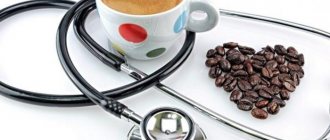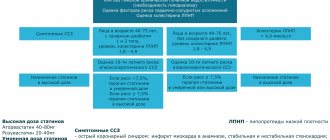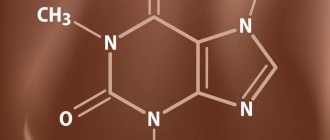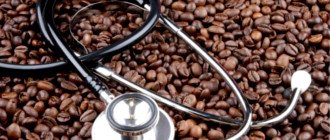Caffeine-sodium benzoate solution for subcutaneous administration 20% 1 ml ampoule 10 pcs. in Moscow
Latin name
Coffein-benzoate sodium solution for injections
International nonproprietary name
caffeine
Release form
Solution for subcutaneous administration
Package
1 ml - ampoules (10) - cardboard packs. 1 ml - ampoules (10) - cardboard packs with a cardboard insert for fixing the ampoules.
Description
Transparent or opalescent, colorless or slightly colored liquid.
pharmachologic effect
Has a stimulating effect on the central nervous system, enhances and regulates excitation processes in the cerebral cortex; in appropriate doses, it enhances positive conditioned reflexes and increases motor activity. The stimulating effect leads to increased mental and physical performance, reduced fatigue and drowsiness. Large doses can lead to depletion of nerve cells. The effect of sleeping pills and narcotics is weakened, increases the reflex excitability of the spinal cord, and stimulates the respiratory and vasomotor centers. Cardiac activity under the influence of caffeine-sodium benzoate increases, myocardial contractions become more intense and more frequent. In collaptoid and shock conditions, blood pressure increases under the influence of caffeine-sodium benzoate; with normal blood pressure, no significant changes are observed, since simultaneously with the excitation of the vasomotor center and the heart, under the influence of caffeine-sodium benzoate, the blood vessels of skeletal muscles and other areas of the body (heart) dilate , kidneys), however, the vessels of the abdominal organs (except the kidneys) narrow. Diuresis under the influence of caffeine-sodium benzoate increases slightly, mainly due to a decrease in the reabsorption of electrolytes in the renal tubules. Brain vessels narrow under the influence of caffeine-sodium benzoate, especially when they dilate. Caffeine sodium benzoate reduces platelet aggregation.
Indications
Diseases accompanied by depression of the central nervous system, functions of the cardiovascular and respiratory systems (including poisoning with opioid analgesics, infectious diseases), cerebral vascular spasms, decreased mental and physical performance, drowsiness.
Directions for use and doses
Administered subcutaneously or taken orally. Adults - 100-200 mg 2-3 times a day; children - 25-100 mg 2-3 times a day.
Compound
1 ml. contains: caffeine sodium benzoate 200 mg; excipients: sodium hydroxide, water for injection.
Contraindications
Arterial hypertension, organic diseases of the cardiovascular system (including severe atherosclerosis), glaucoma, increased excitability, sleep disorders, old age.
Use during pregnancy and breastfeeding
Since there have been no adequate and well-controlled studies in women during pregnancy, and given the slow elimination of caffeine from the fetus, its use during pregnancy is possible only after assessing the benefit/risk ratio for the mother and fetus. Caffeine and its metabolites are excreted into mother's milk in small quantities. If it is necessary to use it during lactation, the benefit/risk ratio for the mother and child should be assessed. Use in neonatology.
special instructions
Caffeine can be used during the neonatal period, as well as in premature infants. In this case, the concentration of caffeine in plasma should be monitored and maintained within therapeutic limits (3-10 mcg/ml). Use in persons with a history of gastric and duodenal ulcers. Caution is required when prescribing caffeine to these groups of patients, due to the increased risk of exacerbation of peptic ulcer disease in them. Impact on the ability to perform work that requires concentration. When taken orally in high doses, caffeine makes it difficult to concentrate and increases the number of operator errors when performing work that requires concentration.
Side effects
From the side of the central nervous system: sleep disturbance, agitation, anxiety; With prolonged use, addiction is possible. From the cardiovascular system: tachycardia, increased blood pressure, arrhythmias. From the digestive system: nausea, vomiting.
Drug interactions
When used simultaneously, the effect of sleeping pills and anesthetics is reduced. With simultaneous use, it is possible to enhance the effect of analgesics-antipyretics, salicylamide, naproxen. With the simultaneous use of estrogens (hormonal contraceptives, drugs for HRT), it is possible to increase the intensity and duration of action of caffeine due to inhibition of the CYP1A2 isoenzyme by estrogens. When administered concomitantly with adenosine, caffeine reduces the increased heart rate and blood pressure changes caused by adenosine infusion; reduces vasodilation caused by the action of adenosine. With simultaneous use, it is possible to increase the bioavailability, absorption rate and plasma concentration of acetylsalicylic acid. With simultaneous use, mexiletine reduces the clearance of caffeine and increases its plasma concentrations, apparently due to mexiletine inhibition of caffeine metabolism in the liver. Methoxsalen reduces the excretion of caffeine from the body with a possible increase in its effect and the development of toxic effects. Due to the induction of microsomal liver enzymes under the influence of phenytoin, its simultaneous use accelerates the metabolism and excretion of caffeine. Fluconazole and terbinafine cause a moderate increase in the concentration of caffeine in the blood plasma, ketoconazole - less pronounced. The most pronounced increase in AUC and decrease in clearance are observed with simultaneous use of caffeine with enoxacin, ciprofloxacin, pipemidic acid; less pronounced changes - with pefloxacin, norfloxacin, fleroxacin. When used simultaneously, caffeine accelerates the absorption of ergotamine.
Storage conditions
Store at a temperature not exceeding 25C, in a place protected from light.
Caffein-benzoate sodium solution for injections
Caffeine is a methylxanthine that has a psychostimulating and analeptic effect. Competitively blocks central and peripheral A1 and A2 adenosine receptors. Inhibits the activity of phosphodiesterase in the central nervous system, heart, smooth muscle organs, skeletal muscles, adipose tissue, promotes the accumulation of cAMP and cGMP in them (this effect is observed when using only high doses of caffeine). Stimulates the centers of the medulla oblongata (respiratory and vasomotor), as well as the n.vagus center, has a direct stimulating effect on the cerebral cortex. In high doses, it facilitates interneuronal conduction in the spinal cord, enhancing spinal reflexes. Increases mental and physical performance, stimulates mental activity, motor activity, shortens reaction time, temporarily reduces fatigue and drowsiness. In small doses, the stimulating effect predominates, and in large doses, the effect of depression of the nervous system predominates. It quickens and deepens breathing, usually has a positive ino-, chrono-, batmo- and dromotropic effect (since the effect on the cardiovascular system consists of a direct stimulating effect on the myocardium and a simultaneous stimulating effect on the n.vagus centers, the resulting effect depends on the predominance of that or other action). Stimulates the vasomotor center and has a direct relaxing effect on the vascular wall, which leads to dilation of the vessels of the heart, skeletal muscles and kidneys, while the tone of the cerebral arteries increases (causes a narrowing of the blood vessels of the brain, which is accompanied by a decrease in cerebral blood flow and oxygen pressure in the brain). Blood pressure changes under the influence of vascular and cardiac mechanisms of caffeine's influence: with normal initial blood pressure, caffeine does not change or slightly increases it; with arterial hypotension, it normalizes it. It has an antispasmodic effect on smooth muscles (including a bronchodilator effect), and a stimulating effect on striated muscles. Increases gastric secretory activity and diuresis (decreased reabsorption of sodium and water cations in the proximal and distal renal tubules, as well as dilation of renal vessels and increased filtration in the renal glomeruli). Reduces platelet aggregation and histamine release from mast cells. Increases basal metabolism: increases glycogenolysis, increases lipolysis.










